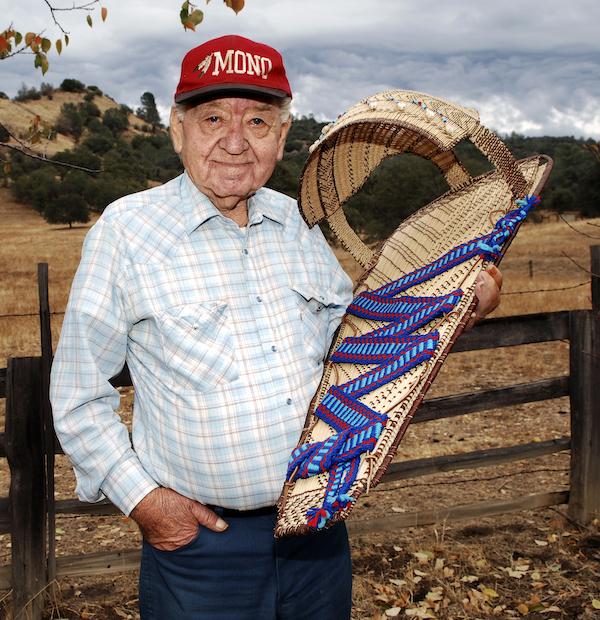Ulysses Goode

Photo by Tom Pich
Bio
Ulysses Goode was born May 29, 1927, in the Western Mono community of Northfork in Madera County, California. He began weaving at the age of seven under the guidance of his mother, Daisy McMann, and his aunt Ella McSwain, who were both accomplished weavers. Goode says he was attracted to basketmaking because it was a means to "make an extraordinary object out of ordinary materials. Putting the basket together [is my favorite part]. It's the culmination of all your work. You see these sticks and stuff out there in the hills, and then you've put this basket together."
Though most weavers are women, Goode learned that among earlier generations several men in his community made baskets as well. He became determined to perpetuate this tradition. Before he started working full-time as a weaver, Goode was the major supplier of the materials needed for baskets — sedge roots, split redbud shoots, and sourberry sticks.
Goode is both a master of the range of Mono basket types — cradle boards, twined seed beaters, twined and coiled cooking baskets, conical burden baskets, and other forms — and a prolific weaver. He is perhaps best known for his cradle boards, which are actually three baskets interwoven, requiring two warps and two wefts, to create a secure, attractive cradle for carrying an infant on one's back. Goode's design for his cradle boards is essentially traditional, although he has introduced new decorative and structural elements. Unlike older cradle boards, his are covered with designs, utilizing additional bands of redbud chevrons and adding cowry shells to the bead pendants.
Historically, about 500 autonomous Indian communities have populated the territory that is now called California, with at least 80 distinct languages, and numerous variations in traditional basketry. Over the years Goode has learned many of these different tribal styles. He estimates that he has made more than 450 cradle boards since he began working full-time in the 1970s. His artistry is best known among local Western Mono, Southern Miwuk, and Chukhansi tribal members, but is gradually reaching a broader public.

